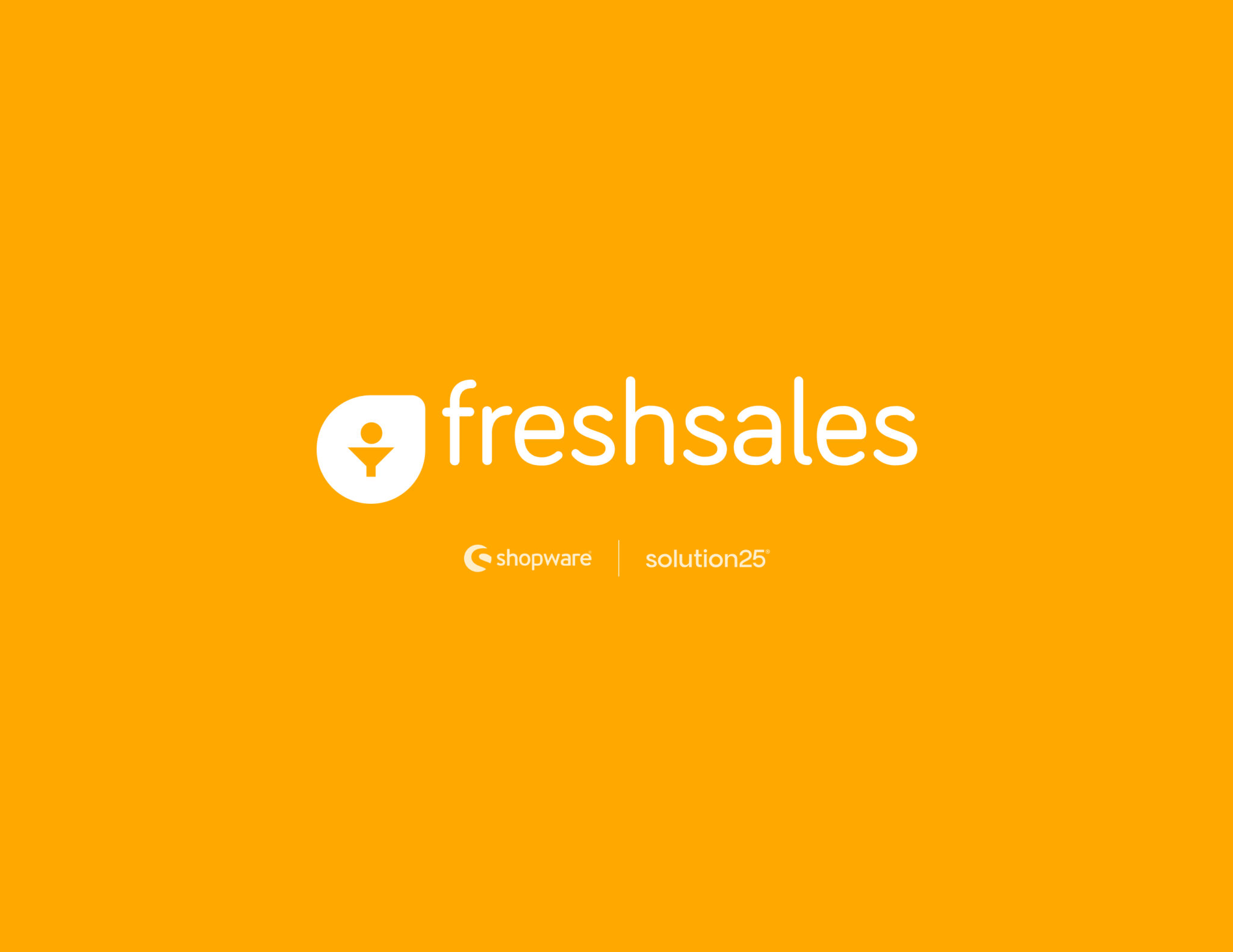Shopware Platinum Partner
200+ Projects
75+ Experts
Shopware Platinum Partner
200+ Projects
75+ Experts

Customer relationship management (CRM) is as important in contemporary e-commerce as payment methods and product quality. You can monitor consumer interactions, tailor communications, and increase conversions by integrating a robust CRM system with your online store. Freshsales is among the best CRM tools on the market.
As a component of the Freshworks suite, Freshsales provides features like customer segmentation, email tracking, AI-powered lead scoring, and sales automation. Adding Freshsales to your Shopware 6 store will allow you to:
This manual will lead you through:
Freshworks created the cloud-based CRM platform Freshsales specifically for e-commerce companies and sales teams. From a single, user-friendly interface, it acts as a central location for managing leads, client interactions, sales pipelines, campaigns, and tasks.
Crucial Elements of Freshsales:
Additionally, Freshsales integrates with numerous platforms, such as Gmail, Outlook, Shopify, WhatsApp, and, with a few more steps, Shopware 6.
It is therefore an effective tool for internet vendors who wish to:
Additionally, Freshsales offers strong forecasting and reporting capabilities that let companies monitor key performance indicators (KPIs) like team productivity, sales cycle performance, conversion rate, and deal closure time. Medium-sized to large online retailers who want a centralized system to coordinate their support, sales, and marketing teams will find the CRM especially useful.
Beyond just data synchronization, integrating Freshsales into your Shopware-based online store can offer several business benefits:
Freshsales allows you to link interactions, conversations, and lead status to the same customer record, while Shopware manages customer data from a commerce perspective—orders, products, and checkout. This makes it possible to see every customer’s journey from their initial visit to their subsequent purchases.
You can set up automated email sequences in Freshsales that are triggered by Shopware customer behavior. When a customer places an order, for instance, you can:
With the segmentation tools and intelligent filters offered by Freshsales, you can:
Your team can be automatically assigned tasks based on Shopware events. For instance:
Email marketing platforms like Freshmarketer and Mailchimp are easily integrated with Freshsales. This implies that, using precise CRM data, you can segment and sync Shopware customer lists to start newsletters, sales, or seasonal campaigns.
Make sure of the following before integrating Freshsales with Shopware 6:
Go to https://freshsales.io.
Click Try it free.
Enter your business name, email, and choose your Freshsales domain (e.g., yourshop.freshsales.io).
Select the purpose for which you want to use Freshsales.
Complete account registration and log into the Freshsales dashboard.
In the top-right corner, click your profile icon and select Settings.
Go to Apps & Integrations at API Settings.
Copy your API Key you’ll use it to authenticate any external request.
Note your Freshsales Domain URL (e.g., https://yourshop.freshsales.io) this is your base API endpoint.
Since the Shopware Store does not currently have an official Freshsales plugin, you can integrate the two systems through custom development or third-party automation tools like Zapier.
Zapier is the best option for non-developers. Zapier is a platform for no-code automation that uses “triggers” and “actions” to link two or more apps. Data from Shopware orders or customers can be sent straight into Freshsales using it.
Go to Zapier.com and create an account (if you don’t already have one). Just click Start free with email and then continue.
Click “Create Zap” to begin a new automation.
App: Choose Webhooks by Zapier
Event: Select Catch Hook
Zapier will now generate a unique webhook URL.
Copy this URL — you will need it for Shopware.
Since Shopware 6 does not natively support webhook creation via the Admin Panel, you have two options:
Option 1: Custom Plugin (for developers)
Create a plugin that listens to events like customer.register or order.placed, then sends a POST request to the Zapier Webhook URL.
Option 2: Flow Builder (Recommended – No Code Required)
If you’re using Shopware Professional Edition (or Shopware Cloud), you can use the built-in Flow Builder to send data automatically to Zapier.
App: Choose Freshsales
Event: Create Contact or Create Lead
Connect your Freshsales account using your API Key and Domain URL. Map incoming Shopware fields to Freshsales fields and test.
Developers can create a custom plugin in Shopware that sends HTTP requests to Freshsales. Subscribe to events and use Guzzle or the Shopware HTTP client to POST to Freshsales endpoints, then log responses for debugging
You must choose which consumer information to give to Freshsales. The fields that are most frequently synced are:
Profile of the Customer
Purchase Patterns
Engagement Practices
After setup, thoroughly test your integration to ensure accuracy and stability.
Following Freshsales’ successful integration with Shopware 6 and verification of its functionality, it’s critical to preserve and enhance this relationship for sustained success.
What happens if an order fails to sync?
The plugin logs the error. You can manually re-sync or fix data issues and retry.
Can I sync only selected products?
Yes, most plugins allow category-based or tag-based sync filters for selective syncing.
What are the supported payment and shipping sync features?
Payments and shipping statuses can be mapped between systems, depending on plugin functionality.
How do I handle multi-store setups?
Ensure each store has unique identifiers in Freshsales and separate sync configurations.
Does Freshsales update Shopware stock automatically?
Inventory sync is outbound from Shopware to Freshsales, so stock counts remain managed in Shopware.